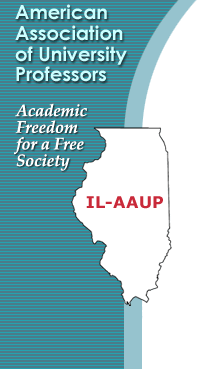 |
|
How’s your recovery going?
Officially, the Great Recession ended almost three years ago. How’s your recovery going?
Unfortunately, for a lot of us the improvements in our economic situation are barely noticeable. Faculty in part-time positions have justifiably criticized the lack of information about their situations, even as they have become the majority within the professoriate. Our students are facing escalating tuition bills and student loan debt, and wondering what’s driving those increases. And the “Occupy” movement has drawn a whole new level of attention to income inequality, an issue the American Association of University Professors’s annual report has taken up for many years in the context of colleges and universities. Where do you fit in “the 99%”?
We’ve just released A Very Slow Recovery: The Annual Report on the Economic Status of the Profession, 2011–12. The complete report (including the institutional listings of average salary by rank and gender and aggregate tables for comparison) is available on our website, and AAUP members will also receive a hard copy of this year’s report in the mail as part of their member subscription to Academe.
In addition to listing average salary by faculty rank and gender at 1,250 colleges and universities, the report provides an important perspective on the economic challenges facing higher education.
Here are some highlights:
This year’s analysis debunks the myth that faculty salaries are driving tuition prices upward.
- Tuition prices have risen two, three, or four times as fast as full-time faculty salaries.
- At public colleges and universities, a major factor in tuition increases has been the withdrawal of state and local funding.
- The rise in tuition prices has coincided with rapid growth in part-time faculty appointments that pay incredibly low wages and usually do not include benefits.
This year’s report also takes another look at the compensation of college and university presidents. What signal is sent when presidential salaries continue to increase while those of faculty members stagnate?
Collective bargaining rights have come under attack from legislators and governors in several states, who assert that public-sector workers are overpaid relative to workers in the private sector. We know that this is not true with regard to faculty salaries, since the overall private-sector advantage for full-time faculty continues to increase. But what exactly is the impact of unionization itself on faculty salaries? We provide a fresh analysis.
Each year, we hear from faculty that they rely on this annual report on full-time faculty compensation to help them advocate for equity and quality on their campuses. The report—the only national faculty compensation report that uses the current academic year’s data, obtained from an AAUP survey—is possible because of your membership and is supported by your membership dues. Thank you!
Finally, we are pleased to report that the Coalition on the Academic Workforce—of which the AAUP is a founding member—has collected new data on the compensation and working conditions of academics in contingent positions. The coalition’s initial report will be released later this spring, and we encourage all of our members and chapters to join the struggle to improve the working conditions of the “academic precariat.”
If you have questions, comments, or suggestions about this report, please let us know (aaupfcs@aaup.org). This is always a busy time of year, but we try to respond to every message. We look forward to hearing from you.
|
|


